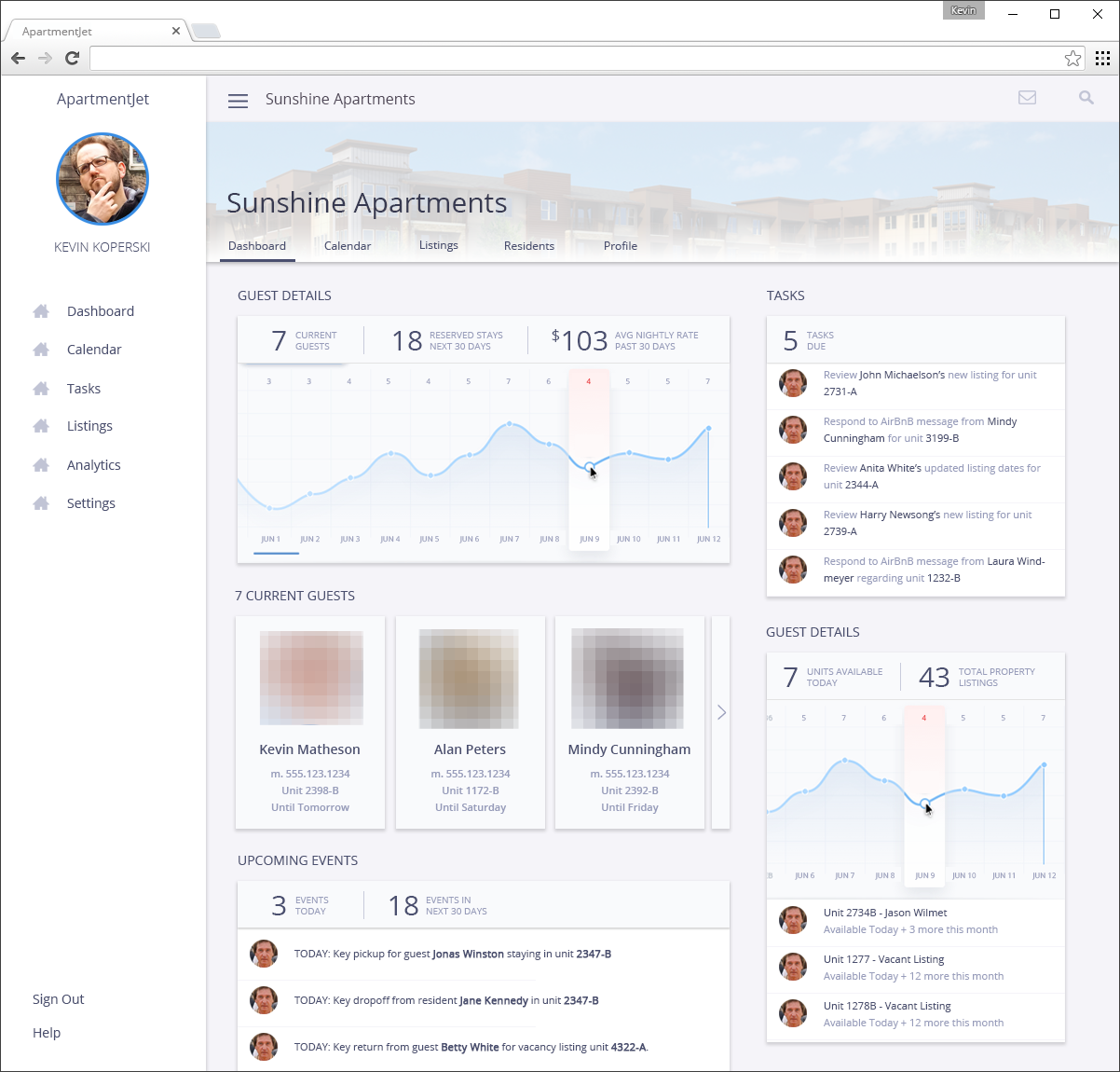This is the fifth article in a series I call ApartmentJet: The Story of a Startup, chronicling my most recent startup success.
By September 2016, our idea had been vetted by potential customers, and we had a clear vision for the product we needed to build. The next step was turning this vision into a functioning business. We filed the necessary paperwork, and ApartmentJet officially became a legal entity somewhere in Delaware.
With our company established, we divided and conquered. Eric and Andy focused on drafting pitch decks to raise capital, while I immersed myself in product development: sketching screens and mapping out workflows.

Returning to Code
Earlier in 2016, I had returned to writing code after several years of hibernation. In that time, web development had changed dramatically. Font-end JavaScript frameworks dominated the scene, as they still do today.
I learned the basics of Node.js and spent time comparing React and Angular. I won't dive into technical considerations, but I chose Angular because it had more functionality "out of the box," which complemented my admittedly rusty skill set.
On a warm autumn afternoon, I deployed the earliest prototype of what would become ApartmentJet. It wasn't pretty, and it didn't do much, but I take pride knowing pieces of that early code survived until the very end of our journey.

Finding Our First Investor
At about this time, Eric found our first strategic investor. I'll talk more about fundraising in a future post, but this initial investor was crucial to our momentum.
The investor owned and operated a company that would serve as our insurance and screening vendor. This early influx of cash, coupled with ready-made solutions for two of our core needs, helped make the entire venture possible.
Setting Up Shop
In October, we found affordable office space at Chicago's non-profit tech incubator, 1871. We've loved everything about our time at 1871: the atmosphere, the networking, the location, the people. We immediately began working with their recruiting staff to build an engineering team.

The Airbnb Challenge
From a technology standpoint, our biggest unknown was Airbnb. At the time, Airbnb had no developer or partner programs and no documented APIs. We weren't confident how—or if—we could integrate with them.
As part of our interview process, I asked our advanced candidates to complete a coding challenge: Build a web form that would allow me to input property details, save them, and "automatically" create a listing on Airbnb. This approach served two purposes: assess whether integration was technically feasible and identify who possessed the skills to make it happen.
I've gone back and forth on the ethics of this coding challenge. I'd probably approach it differently today, but I don't want to sugarcoat it now. Thankfully, none of the candidates found it inconvenient or excessive (and we hired each of them).
Little did we know that dealing with Airbnb would remain our single biggest technological hurdle for the next two years.
The Foundation Was Set
In January 2017, we hired our first two team members: software engineers Rick Chou and Jordan Hui. A month later, our third engineer, Patrick Koeller, joined us, and development ramped up significantly.

We had transformed from an idea into a real company with legal structure, office space, initial funding, and a talented team. Now came the hard part—building a product that could change an industry.
Next: Coming Soon
Previous: Hello, Rejection
Table of Contents: ApartmentJet: The Story of a Startup
